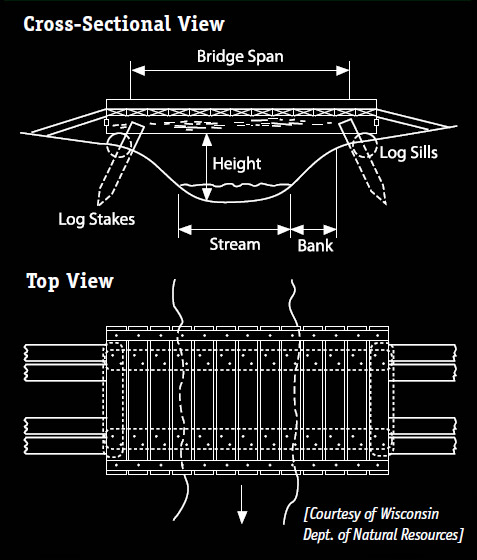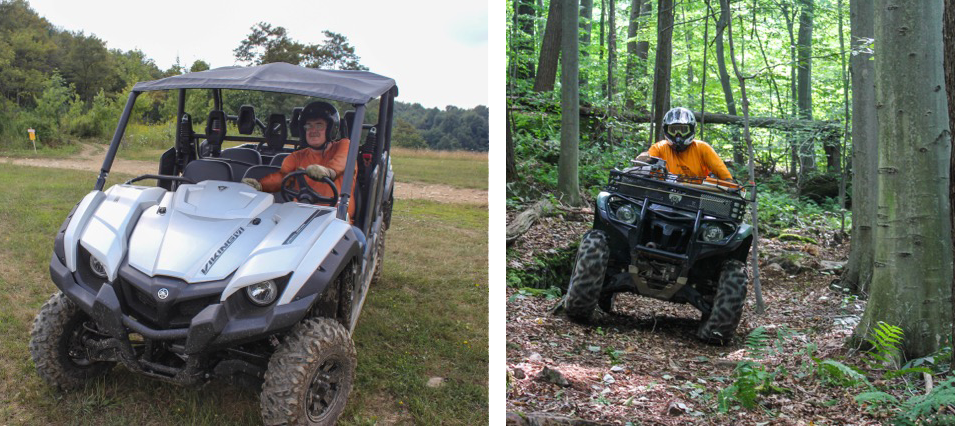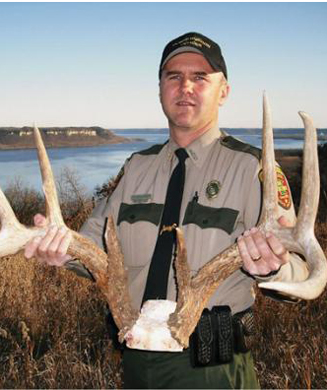Most of us understand how important it is to protect our country’s streams and wetlands. These fragile environs are both home and nursery to many species of fi sh and wildlife. Considering the current popularity of off-road vehicles, it’s even more critical that sportsmen minimize their footprint when crossing streams on ATVs and Side-by-Side (SxS) utility vehicles.
If you’re riding on public lands with posted trails, the best thing is simply to stay on the trail and cross streams at the areas you are directed to. On private land, you should design trails and routes to keep stream crossings to a minimum. At frequent crossing points, you can provide the ultimate protection for streams by building a wooden bridge. Bridges eliminate altering the fl ow or disturbing the streambed, and they prevent bank erosion. The following are some recommended steps for building an ATV and/or SxS worthy water crossing:
CHOOSE THE RIGHT LOCATION
To reduce the length of the bridge, the alignment should be at right angles to the stream and should not be located near abrupt bends in the channel. Locate the bridge on stable banks near a narrow section of the stream.
CONSIDER WATER CAPACITY
The bridge must be constructed so it can easily span the stream during fl ood stages without causing any backwater effects upstream or increased fl ow velocity downstream. Also, bridges that are too small for the amount of water fl ow anticipated will likely be washed away. Bridge abutments must be set back at least 2 feet from the normal edge of the stream to prevent constriction during high fl ow conditions.
SUPPLIES
Two or three suffi ciently large logs of equal diameter (stripped of bark), rough sawn 6-foot 2×6 planks, (7-foot lengths to accommodate a SxS), two logs for endsills, four shorter stake logs, and nails. Avoid using wood treated with creosote.
CONSTRUCTION
Take care to prevent the disturbance of channel banks, vegetation and land within the high water zone of the stream. Don’t do any work when the stream is in fl ood. The basic design (see diagrams) has the two logs laid on a flat rock or a log sill at each end. Boards are nailed across the logs (if you are using 7-foot boards, a third log in the middle may be necessary). Approach ramps can be made out of a few short boards or the gap can be fi lled in with rocks. Pin the bridge in place with stakes. This will keep it from sliding off the sills and will help prevent it from washing away in the event of a flood.
QUICK TIP: When fording streams without a bridge, choose a shallow, rocky area with sloping banks on each side and slowly motor across. Avoid kicking up silt and stay away from wetlands and fl oodplain areas.
SAFETY TIP: Always wear appropriate riding gear when operating an ATV or SxS vehicle, which includes a helmet, eye protection, gloves, long sleeves, long pants and over-the-ankle boots.







